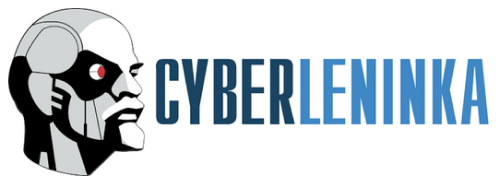Modeling of the Choice of Solutions to Management Tasks when Extinguishing a Fire in Underground Structures
( Pp. 72-82)
More about authors
Anikin Sergei N.
postgraduate at the Department of Fire Tactics and Service (as part of the educational and scientific fire-fighting complex), @mail.ru
State Fire Academy of Emercom of Russia
Moscow, Russian Federation Danilov Mikhail M. Candidate of Engineering, Associate Professor; associate professor at the Department of Fire Tactics and Service (as part of the educational and scientific fire-fighting complex); State Fire Academy of EMERCOM of Russia; Moscow, Russian Federation@yandex.ru Denisov Alexey N. Doctor of Engineering, Professor; Professor at the Department of Fire Tactics and Service (as part of the educational and scientific fire-fighting complex); State Fire Academy of EMERCOM of Russia; Moscow, Russian Federation@mail.ru Korolev Pavel S. postgraduate at the Department of Fire Tactics and Service (as part of the educational and scientific fire-fighting complex); State Fire Academy of EMERCOM of Russia; Moscow, Russian Federation@mail.ru
State Fire Academy of Emercom of Russia
Moscow, Russian Federation Danilov Mikhail M. Candidate of Engineering, Associate Professor; associate professor at the Department of Fire Tactics and Service (as part of the educational and scientific fire-fighting complex); State Fire Academy of EMERCOM of Russia; Moscow, Russian Federation@yandex.ru Denisov Alexey N. Doctor of Engineering, Professor; Professor at the Department of Fire Tactics and Service (as part of the educational and scientific fire-fighting complex); State Fire Academy of EMERCOM of Russia; Moscow, Russian Federation@mail.ru Korolev Pavel S. postgraduate at the Department of Fire Tactics and Service (as part of the educational and scientific fire-fighting complex); State Fire Academy of EMERCOM of Russia; Moscow, Russian Federation@mail.ru
Abstract:
The article deals with the problem of the theoretical foundations of management in organizational systems. The modeling of the choice of managerial alternatives for extinguishing a fire in underground structures is presented based on the comparison of real and forecast values by the fire extinguishing manager (ranking the conditions for choosing managerial alternatives), while ranking the conditions for choosing managerial alternatives is carried out using a graphoanalytic approach. The solution of the tasks set during the planning of actions is shown by modeling GERT networks. An urgent issue is and remains the possibility of choosing a decisive direction, taking into account the comparison of real and forecast results of fire extinguishing actions, in the case when the criteria of the current situation may be a variety of possible acceptable options. Results. An approach to the selection of management alternatives for fire extinguishing in underground structures has been developed based on the comparison of real and forecast values by the fire extinguishing manager based on the results of the application of the network planning method and the method of graphical evaluation and analysis of systems, a comprehensive analysis of the solution of the problem based on the identification of boundary conditions of fire extinguishing has been developed, a model for solving management problems during combat operations to extinguish a fire has been developed. The application of the developed model is relevant not only for the analysis of potential scenarios for planning and implementing combat operations to extinguish a fire in underground structures, but also for modeling the process of managing an organizational fire extinguishing system in boundary conditions of fire extinguishing in underground structures of high extent and area. This work is intended for those who make managerial decisions and manage forces and means when extinguishing fires.
How to Cite:
Anikin S.N., Danilov M.M., Denisov N.A., Korolev P.S. Modeling of the Choice of Solutions to Management Tasks when Extinguishing a Fire in Underground Structures. Computational Nanotechnology. 2023. Vol. 10. No. 3. Pp. 72–82. (In Rus.) DOI: 10.33693/2313-223X-2023-10-3-72-82. EDN: RNTIBJ
Reference list:
Meteleva E.R. Identification of trends in capital concentration based on the analysis of urban systems. News of the Irkutsk State Economic Academy. 2007. No. 6. Pp. 5–9. (In Rus.)
Novikov D.A. Theory of management of organizational systems. Moscow: MPSI, 2005. 584 p.
Korolev P.S. Identification of boundary conditions in the actions of fire and rescue units to extinguish fires in underground structures. Modern Science: Actual Problems of Theory and Practice. Series: Natural and Technical Sciences. 2022. No. 10/2 Pp. 55–62. (In Rus.) DOI: 10.37882/2223-2966.2022.10-2.15.
Order of EMERCOM of Russia dated October 16, 2017 No. 444 “On approval of the combat regulations of fire departments, defining the procedure for organizing fire extinguishing and carrying out emergency rescue operations.”
Denisov A., Danilov M., Tsokurova I., Anikin S. Neuronetwork support for subdivision management of fire extinguishing of rolling stock during unloading at metallurgical enterprises. In: International Scientific Siberian Transport Forum TransSiberia - 2021. Lecture notes in networks and systems. Vol. 402. A. Manakov, A. Edigarian (eds.). Cham: Springer. DOI: https://doi.org/10.1007/978-3-030-96380-4_176.
Aladina E.A., Anikin S.N., Danilov M.M., Denisov A.N. Analysis of the fulfillment of the main task by the personnel of the EMERCOM of Russia in activities related to the state of protection of the individual, property, society and the state from fires. Current Problems of Integrated Safety in Construction, Development Trends in Modern Conditions: Collection of Reports of the All-Russian Scientific and Practical Conference. 2021. No. 1. Pp. 10–15.
Shur P.Z., Shlyapnikov D.M., Alekseev V.B., Khasanova A.A. On the question of the possibility of joint application of methods for assessing professional risk. Bulletin of KazNMU. 2014. No. 3-1. (In Rus.) URL: https://cyberleninka.ru/article/n/k-voprosu-o-vozmozhnosti-sovmestnogo-primeneniya-metodik-otsenki-professionalnogo-riska (data of accesses: 30.05.2023).
Danilov M.M., Denisov A.N., Latysheva L.A. Complex conditions of extreme necessity when performing the main combat mission by fire and rescue units. Ius Publicum et Privatum. 2022. No. 3 (18). Pp. 59–67. (In Rus.) DOI: 10.46741/2713-2811.2022.18.3.006. EDN AYPAOC.
Kapysh A.S. Intelligent decision support system based on reasoning based on precedents: Abstract of dis. ... of Cand. Sci. (Eng.). Volgograd, 2011. 238 p.
Moiseev N.N. Preface to the book by Orlovsky S.A. Problems of decision making with fuzzy initial information. Moscow: Nauka, 1981. 208 p.
Alekseev V.E., Zakharova D.V. Graphs theory: Textbook. Nizhny Novgorod: Nizhny Novgorod State University, 2017. 119 p.
Burkatovskaya Yu.B. Graph theory: Textbook. Part 1. Tomsk: Tomsk Polytechnic University Publishing House, 2014. 200 p.
Kalugin N.A., Kalugin A.N. Elements of graphs theory: textbook. allowance. Samara: Publishing House of the Samara State Aerospace University, 2013. 48 p.
Burkov V.N. Fundamentals of the mathematical theory of active systems. Moscow: Nauka, 1977. 255 p.
Burkov V.N., Kondratyev V.V. Mechanisms of functioning of organizational systems. Moscow: Nauka, 1981. 384 p.
Burkov V.N., Novikov D.A. The theory of active systems: State and prospects. Moscow: SYNTEG, 1999. 128 p.
Novikov D.A., Petrakov S.N. Course on the theory of active systems. Moscow: SYNTEG, 1999. 108 p.
Danilov M.M., Danilova M.A., Eremin M.P. et al. On the issue of choosing decisions when extinguishing a fire based on the stages of development of a decision support system. Technospheric Safety. 2018. No. 4 (21). Pp. 113–121. EDN: YXLVOX.
Tarantsev A.A., Potashev D.A., Ulyanovskaya T.S. Network models for managing forces and means when extinguishing vehicles and carrying out emergency rescue operations. Siberian Fire and Rescue Bulletin. 2023. No. 1 (28). Pp. 145–152. (In Rus.) DOI: 10.34987/vestnik.sibpsa.2023.62.90.012. EDN: EPPUGH.
Phillips D., Garcia-Diaz A. Methods for network analysis. Moscow: Mir, 1984. 496 p.
Neumann K. Stochastic project networks: Temporal analysis, scheduling and cost minimization. Berlin: Springer-Verlag, 1990. 238 c.
Pritsker A.A.B. GERT: Graphical evaluation and review technique. Santa Monica, CA: RAND Corporation, 1966.
Shibanov A.P. Generalized GERT networks for modeling protocols, algorithms and programs of telecommunication systems: Abstract of dis. ... of Cand. Sci. (Eng.): 05.13.13. Ryazan, 2003. 265 p.
Zyryanov A.A. Forecasting the behaviour of business processes based on GERT networks. Prospects for the Development of Information Technologies. 2012. No. 8. (In Rus.) URL: https://cyberleninka.ru/article/n/prognoz-povedeniya-biznes-protsessov-na-osnove-gert-setey (data of accesses: 12.05.2023).
Dorrer M.G., Zyryanov A.A. Estimation of the numerical characteristics of the GERT network based on equivalent transformations. Educational Resources and Technologies. 2014. No. 1 (4).
Novikov D.A. Theory of management of organizational systems. Moscow: MPSI, 2005. 584 p.
Korolev P.S. Identification of boundary conditions in the actions of fire and rescue units to extinguish fires in underground structures. Modern Science: Actual Problems of Theory and Practice. Series: Natural and Technical Sciences. 2022. No. 10/2 Pp. 55–62. (In Rus.) DOI: 10.37882/2223-2966.2022.10-2.15.
Order of EMERCOM of Russia dated October 16, 2017 No. 444 “On approval of the combat regulations of fire departments, defining the procedure for organizing fire extinguishing and carrying out emergency rescue operations.”
Denisov A., Danilov M., Tsokurova I., Anikin S. Neuronetwork support for subdivision management of fire extinguishing of rolling stock during unloading at metallurgical enterprises. In: International Scientific Siberian Transport Forum TransSiberia - 2021. Lecture notes in networks and systems. Vol. 402. A. Manakov, A. Edigarian (eds.). Cham: Springer. DOI: https://doi.org/10.1007/978-3-030-96380-4_176.
Aladina E.A., Anikin S.N., Danilov M.M., Denisov A.N. Analysis of the fulfillment of the main task by the personnel of the EMERCOM of Russia in activities related to the state of protection of the individual, property, society and the state from fires. Current Problems of Integrated Safety in Construction, Development Trends in Modern Conditions: Collection of Reports of the All-Russian Scientific and Practical Conference. 2021. No. 1. Pp. 10–15.
Shur P.Z., Shlyapnikov D.M., Alekseev V.B., Khasanova A.A. On the question of the possibility of joint application of methods for assessing professional risk. Bulletin of KazNMU. 2014. No. 3-1. (In Rus.) URL: https://cyberleninka.ru/article/n/k-voprosu-o-vozmozhnosti-sovmestnogo-primeneniya-metodik-otsenki-professionalnogo-riska (data of accesses: 30.05.2023).
Danilov M.M., Denisov A.N., Latysheva L.A. Complex conditions of extreme necessity when performing the main combat mission by fire and rescue units. Ius Publicum et Privatum. 2022. No. 3 (18). Pp. 59–67. (In Rus.) DOI: 10.46741/2713-2811.2022.18.3.006. EDN AYPAOC.
Kapysh A.S. Intelligent decision support system based on reasoning based on precedents: Abstract of dis. ... of Cand. Sci. (Eng.). Volgograd, 2011. 238 p.
Moiseev N.N. Preface to the book by Orlovsky S.A. Problems of decision making with fuzzy initial information. Moscow: Nauka, 1981. 208 p.
Alekseev V.E., Zakharova D.V. Graphs theory: Textbook. Nizhny Novgorod: Nizhny Novgorod State University, 2017. 119 p.
Burkatovskaya Yu.B. Graph theory: Textbook. Part 1. Tomsk: Tomsk Polytechnic University Publishing House, 2014. 200 p.
Kalugin N.A., Kalugin A.N. Elements of graphs theory: textbook. allowance. Samara: Publishing House of the Samara State Aerospace University, 2013. 48 p.
Burkov V.N. Fundamentals of the mathematical theory of active systems. Moscow: Nauka, 1977. 255 p.
Burkov V.N., Kondratyev V.V. Mechanisms of functioning of organizational systems. Moscow: Nauka, 1981. 384 p.
Burkov V.N., Novikov D.A. The theory of active systems: State and prospects. Moscow: SYNTEG, 1999. 128 p.
Novikov D.A., Petrakov S.N. Course on the theory of active systems. Moscow: SYNTEG, 1999. 108 p.
Danilov M.M., Danilova M.A., Eremin M.P. et al. On the issue of choosing decisions when extinguishing a fire based on the stages of development of a decision support system. Technospheric Safety. 2018. No. 4 (21). Pp. 113–121. EDN: YXLVOX.
Tarantsev A.A., Potashev D.A., Ulyanovskaya T.S. Network models for managing forces and means when extinguishing vehicles and carrying out emergency rescue operations. Siberian Fire and Rescue Bulletin. 2023. No. 1 (28). Pp. 145–152. (In Rus.) DOI: 10.34987/vestnik.sibpsa.2023.62.90.012. EDN: EPPUGH.
Phillips D., Garcia-Diaz A. Methods for network analysis. Moscow: Mir, 1984. 496 p.
Neumann K. Stochastic project networks: Temporal analysis, scheduling and cost minimization. Berlin: Springer-Verlag, 1990. 238 c.
Pritsker A.A.B. GERT: Graphical evaluation and review technique. Santa Monica, CA: RAND Corporation, 1966.
Shibanov A.P. Generalized GERT networks for modeling protocols, algorithms and programs of telecommunication systems: Abstract of dis. ... of Cand. Sci. (Eng.): 05.13.13. Ryazan, 2003. 265 p.
Zyryanov A.A. Forecasting the behaviour of business processes based on GERT networks. Prospects for the Development of Information Technologies. 2012. No. 8. (In Rus.) URL: https://cyberleninka.ru/article/n/prognoz-povedeniya-biznes-protsessov-na-osnove-gert-setey (data of accesses: 12.05.2023).
Dorrer M.G., Zyryanov A.A. Estimation of the numerical characteristics of the GERT network based on equivalent transformations. Educational Resources and Technologies. 2014. No. 1 (4).
Keywords:
choice, management, problem solving management, alternative, fighting, fire extinguishing, staff composition.
Related Articles

THEORETICAL AND HISTORICAL LEGAL SCIENCES Pages: 21-26 Issue №23832
Formation of the System of Navigation Safety in Sweden in the 19th - Early 20th Centuries
Sweden
navigation safety
royal decrees
service
management
Show more
14. MISCELLANIOUS Pages: 270-273 Issue №17852
Organizational, economic and regulatory implementation of the priority development trends of regional industrial agriculture
agro-industrial complex
priority areas of development
management
state regulation
Show more
15. ECONOMICS AND NATIONAL ECONOMY MANAGEMENT, ENTREPRENEURSHIP, MARKETING, MANAGEMENT Pages: 191-193 Issue №5143
INTANGIBLE ASSETS AS A SPECIAL FORM MANAGEMENT
innovation
intellectual capital
information system
crowdsourcing
management
Show more
15. ECONOMICS AND NATIONAL ECONOMY MANAGEMENT, ENTREPRENEURSHIP, MARKETING, MANAGEMENT Pages: 203-205 Issue №3543
APPROACHES TO THE FORMATION OF EFFECTIVE MANAGEMENT OF HOTEL SERVICES IN THE ECONOMY OF THE REPUBLIC OF TAJIKISTAN
the hotel
hotel services
management
the hotel infrastructure
strategic management
Show more
14. INNOVATION AND INVESTMENT MANAGEMENT Pages: 197-200 Issue №4641
Management model of the organization of innovative activity at the industrial enterprise
innovation
innovation
innovative development
management
Show more
5.2.6. MANAGEMENT Pages: 288-292 Issue №20773
Trend Analysis of Personnel Management in Commercial Organizations of the Russian Federation
personnel management
distribution of functions
management
factors of production
competition
Show more
5.2.6. MANAGEMENT Pages: 309-314 Issue №22298
Categorical Apparatus of Enterprise Competitiveness Management in the Conditions of Technological Transformation
management
market
competition
efficiency
system analysis
Show more
9. OTHER Pages: 195-200 Issue №3231
Teaching Tolerance: specificity of social and psychological management of organizational construction of culture
tolerance
impact
management
organizational kulturhistorie
economic man
Show more
14. OTHER Pages: 182-184 Issue №3543
Concept and signs of the administrative decision of activity law-enforcement bodies
management
management decision
signs of management decisions
Show more
15. ECONOMICS AND NATIONAL ECONOMY MANAGEMENT, ENTREPRENEURSHIP, MARKETING, MANAGEMENT Pages: 196-198 Issue №5143
PRINCIPLES OF PERFORMANCE EVALUATION MARKETING ASSETS
principles
rating
the cost
marketing assets
management
Show more










